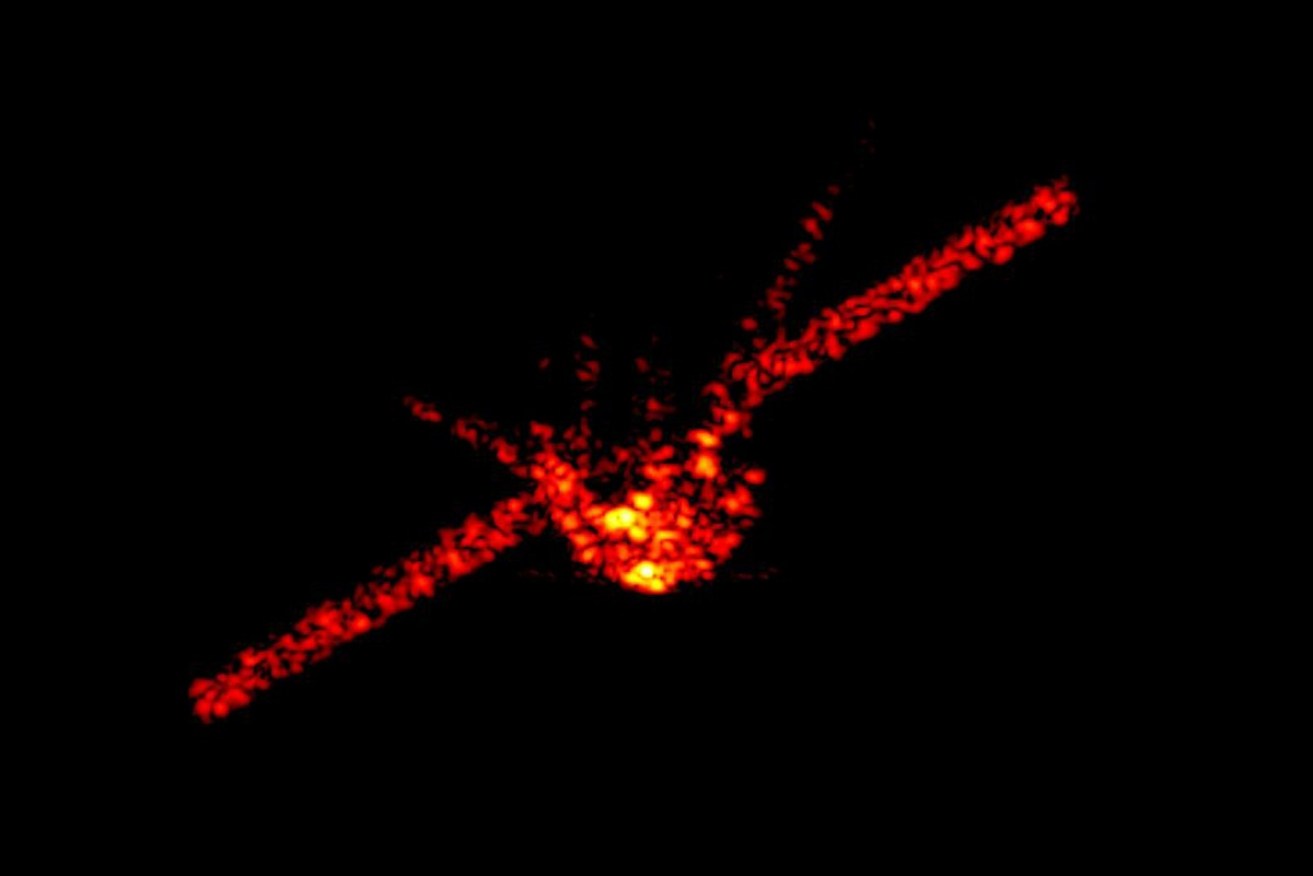‘Out-of-control’ space station crashes into South Pacific

A radar image of Tiangong-1 from different perspectives taken at an orbital height. Photo: AAP
A Chinese space station roughly the size of a school bus has crashed to Earth over the South Pacific, and “mostly burned up on re-entry”, Chinese state media says.
The “Heavenly Palace”, also known as Tiangong-1, began its descent around 10.15am on Monday, according to Xinhua.
Once it reached around 70 kilometres above the surface, the intense heat of re-entry melted the craft and it began to break apart.
The Tiangong-1 was launched in 2011 to carry out docking and orbit experiments as part of China’s ambitious space programme, which aims to place a permanent station in orbit by 2023.
It was originally planned to be decommissioned in 2013 but its mission was repeatedly extended.

The re-entry of the Chinese space station into the Earth’s atmosphere. Photo: AAP
Executive director of space engineering at the University of Sydney’s School of Aerospace, Warwick Holmes, said people should not fear the space station crash.
He said the risk to civilisation was low because 70 per cent of the world was covered by ocean and large parts of Australia were sparsely populated.”Everyone thinks they’re going to get hit by the Chinese space station. I promise you it’s just not going to happen,” Mr Holmes said before the crash.
“You’ve got a greater probability of getting hit by a car crossing a Sydney road today than you’re going to get hit by the Chinese space station.”
The likelihood of anybody getting hit by any debris was considered less than one in a trillion.
The name “Tiangong” may sound familiar as it was the space station Sandra Bullock attached to in the sci-fi film Gravity.
The space station featured in the film was a futuristic version of Tiangong-1 and coincidentally hurtled towards Earth.
Tiangong-1 is 12 metres long, weighs about 8.5 tonnes and was launched by China’s National Space Administration in 2011.
The crash been a waiting game since contact was lost with the space station in 2016, and experts have been spending the past two years attempting to predict when it would fall.
NW of Tahiti – it managed to miss the 'spacecraft graveyard' which is further south! pic.twitter.com/Sj4e42O7Dc
— Jonathan McDowell (@planet4589) April 2, 2018
In October last year, Flinders University space archaeology expert Alice Gorman said China would not be able to control its landing.
“Contact has been lost with the spacecraft, so apart from monitoring its position the re-entry is uncontrolled,” she said.
In September 2016, China’s Xinhua news agency reported the space craft was “intact and orbiting at an average height of 370 kilometres”.
But by October last year, it had dropped 60 kilometres.
Tiangong-1 has been travelling about 27,000 kph, but as it hurtled towards earth it slowed down and heated up, breaking into burning fragments.
There was only about a 10 per cent chance the spacecraft would survive being burned up on re-entry.
How common is man-made space debris?
Debris from satellites, space launches and the International Space Station enters the atmosphere every few months, but only one person is known to have been hit by any of it.
American woman Lottie Williams was struck but not injured by a falling piece of a US Delta II rocket while exercising in an Oklahoma park in 1997.
Most famously, America’s 77-tonne Skylab crashed through the atmosphere in 1979, spreading pieces of wreckage near the West Australian city of Perth, which fined the US $400 for littering.
The breakup on re-entry of the Columbia space shuttle in 2003 killed all seven astronauts and sent more than 80,000 pieces of debris raining down on a large swath of the Southern United States.
No one on the ground was injured.
In 2011, NASA’s Upper Atmosphere Research Satellite was considered to pose a slight risk to the public when it came down to Earth 20 years after its launching.
Debris from the six-tonne satellite ended up falling into the Pacific Ocean, causing no damage.
China’s own space program raised major concerns after it used a missile to destroy an out-of-service Chinese satellite in 2007, creating a large and potentially dangerous cloud of debris.








